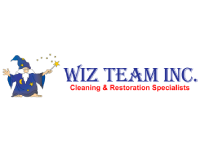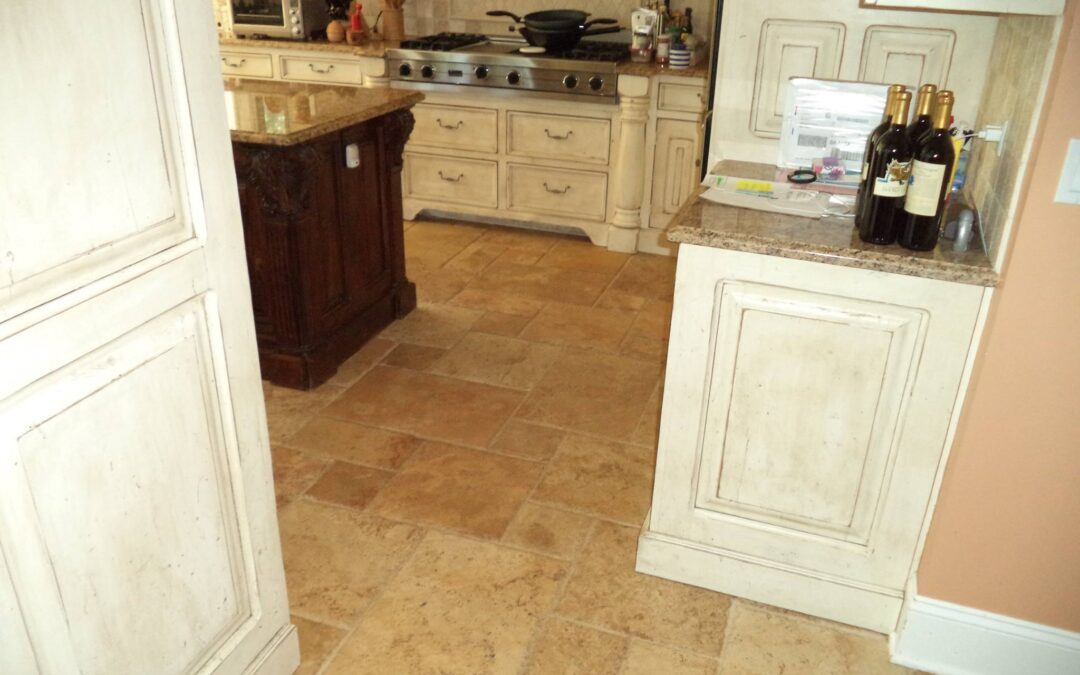Maintaining tile surfaces is crucial for preserving the longevity, aesthetics, and hygiene of a home. Homeowners often struggle with stubborn dirt, grout discoloration, and chemical wear that can compromise tile floors, walls, and countertops. To assist with these challenges,our servicesprovide expert guidance and advanced cleaning techniques. This article outlines professional techniques fortile and grout cleaningusing natural agents like vinegar and lemon, specialized chemicals such as sulfamic acid, and eco-friendly products that counteract soap scum, mold, and water damage—all while protecting materials like porcelain, ceramic, and glass tile. For more detailed information, visitors can check wizclean.com for additional resources and tips.
The sections below provide step-by-step procedures for routine, deep, and specialized cleaning practices for both residential and commercial settings, as part of our services. Emphasis is placed on regular maintenance, quality cleaning tools, and strategies to prevent corrosion and moisture damage. For more detailed guidance, wizclean.com offers comparative data in tables and lists that further guide homeowners in performing effective tile cleaning to reduce wear and tear, extend tile life, and maintain a consistently clean, safe, and inviting space.
Transitioning to the main content, the following sections explore a series of methods and techniques that form a comprehensive strategy for optimal tile maintenance.
Understand Essential Tile Cleaning Techniques for Longevity
Keeping tile surfaces pristine depends on using techniques that are both effective and gentle. Different tile types—such as porcelain, ceramic, and natural stone like travertine or marble—need specific cleaning solutions and methods. By tailoring cleaning protocols to the tile’s composition, homeowners protect surface integrity while preventing damage from abrasive materials, corrosive chemicals, or humidity.
Use Proper Cleaning Solutions for Different Tile Types
Selecting the right cleaning agents is key. Porcelain and ceramic tiles benefit from pH-neutral detergents that dissolve grease and dirt without eroding the finish. Natural stones, such as marble and travertine, require diluted pH-neutral cleaners to prevent etching. When dealing with soap scum or mold, mild acidic solutions, like vinegar or lemon juice, work effectively without harming the tile surface if used correctly. Testing a new solution on an inconspicuous area is always recommended.
Develop a Regular Cleaning Schedule to Maintain Appearance
Consistent maintenance is the cornerstone of tile preservation. A weekly cleaning routine combined with occasional monthly deep cleaning prevents buildup of dirt, grime, and mold that may become difficult to remove later. Regular cleaning not only keeps tiles looking attractive but also reduces health risks from bacteria and allergens that thrive in moist areas. A systematic approach—daily spot cleaning, weekly mopping with a microfiber mop and detergent, and scheduled deep cleaning—ensures grout and hidden areas are thoroughly cared for.
Invest in Quality Cleaning Tools for Better Results
Professional-grade cleaning tools improve maintenance effectiveness. Quality mops, soft-bristle brushes, steam cleaners, and microfiber cloths are designed to remove dirt and bacteria without scratching delicate surfaces. For example, a steam cleaner with adjustable temperature settings loosens grime in grout lines, while a microfiber mop absorbs water efficiently and leaves a streak-free shine. Over time, these quality tools reduce physical effort and support prolonged tile life.
Learn Proper Techniques for Deep Cleaning Tiles
Deep cleaning targets embedded dirt, buildup, and discoloration not removed by routine cleaning. This more intensive process uses mechanical agitation, thermal energy, and specialized cleaning agents to restore a tile’s original luster. Deep cleaning is essential in high-usage areas like bathrooms and kitchens, where buildup can become unsightly or hazardous. Effective deep cleaning reduces mold risk and extends the useful life of tiles.
Choose Appropriate Deep Cleaning Methods for Specific Tiles
Tailored deep cleaning methods are necessary for different tile types. Porcelain and ceramic tiles often withstand aggressive scrubbing and steam cleaning, while natural stone or mosaic tiles may require gentler techniques to avoid etching. For instance, a steam cleaner works well on ceramic tiles, but marble benefits from a gentle poultice with a neutral pH cleaner. Homeowners should follow manufacturer guidelines and professional advice when choosing deep cleaning methods to ensure tile durability is maintained.
Schedule Deep Cleaning Sessions Seasonally or Biannually
Deep cleaning need not be frequent but should be scheduled periodically—seasonally or biannually, depending on foot traffic and moisture exposure. During these sessions, tiles are comprehensively cleaned to remove ingrained stains, disinfect grout lines, and reseal surfaces if needed. For example, a biannual deep clean after humid weather can help prevent mold or mildew on grout, protecting the tile from long-term damage.
Confirm Tile and Grout Drying Thoroughly to Prevent Damage
The drying phase after deep cleaning is critical to avoid moisture retention, which can lead to mold growth or water damage. Ensuring all tile surfaces and grout lines are completely dry is essential. Techniques to promote thorough drying include using fans, dehumidifiers, or natural sunlight, and employing high-quality microfiber towels to remove excess water immediately. Complete drying safeguards both structural integrity and aesthetic quality.
Implement Effective Grout Care and Maintenance Strategies
Grout care is a vital part of tile maintenance. Even if tiles are spotless, neglected grout can mar the overall appearance and hygiene of a surface. Regular grout maintenance prevents discoloration, biofilm buildup, and the need for re-grouting. Proactive grout care helps retain the clean lines and vibrant colors that enhance the look of tiled areas, especially in high-moisture locations like kitchens and bathrooms.
Clean Grout Lines Regularly to Prevent Discoloration
Routine cleaning using soft brushes, microfiber cloths, and appropriate solutions like diluted vinegar or specialized grout cleaners is key. Weekly maintenance disrupts the buildup of bacteria and organic residues, keeping grout bright and supportive of the tile’s appearance. Regular cleaning minimizes mold and mildew risks and extends the life of the grout.
Use Natural Cleaners for Eco-Friendly Maintenance
For those who favor sustainability, natural cleaning agents offer effective alternatives to harsh chemicals. Ingredients like lemon juice, vinegar, and baking soda dissolve soap scum, mineral deposits, and mold without harming sensitive surfaces. These eco-friendly cleaners work by leveraging their inherent acidic or abrasive properties, leaving minimal chemical residue. Such solutions are not only environmentally sound but also reduce potential tile corrosion from synthetic cleaners.
Address Grout Issues Immediately to Avoid Expansion
Timely intervention is essential if grout shows signs of wear, discoloration, or cracking. Due to its porous nature, grout can rapidly absorb spills and moisture, accelerating deterioration. Addressing small issues through targeted cleaning, resealing, or even re-grouting can prevent more extensive future damage. Regular inspections and prompt repairs help maintain grout durability and overall tile appearance.
Detailed Cleaning Tools and Methods List
Below is a detailed list of essential cleaning tools and methods used by professional tile cleaners. Each tool is chosen for its ability to enhance cleaning effectiveness while minimizing damage.
- Microfiber Mops – Superior Absorption and Gentle Cleaning
Microfiber mops capture dirt and moisture efficiently without scratching delicate surfaces. Their fine fibers ensure a streak-free finish and prevent water damage on porous or thin-set tiles. - Steam Cleaners – Deep, Chemical-Free Cleaning
Utilizing high-temperature vapor, steam cleaners break down grime and disinfect tiles without chemical residues. They are ideal for large, high-traffic areas and help loosen dirt in grout lines while promoting quick drying. - Soft-Bristle Brushes – Targeted Grout and Corner Cleaning
These brushes are effective for scrubbing grout lines and tight corners where dirt accumulates. Available in different sizes, they agitate grime gently without damaging tiles, making them suitable for stubborn stains. - Squeegees – Efficient Water Removal and Streak Prevention
After mopping or steam cleaning, squeegees remove excess water efficiently, reducing the risk of water pooling and related damage. They are especially useful on smooth surfaces like glass tiles or polished porcelain. - Specialized Grout Cleaners – Restorative and Protecting Solutions
Designed specifically for grout, these cleaners remove stains and bacterial buildup while helping to reseal the grout. Their use can extend the period between resealing treatments. - Disposable Cleaning Pads – Hygienic and Convenient Maintenance
Ideal for spot-cleaning high-traffic or frequently touched areas, disposable pads prevent cross-contamination as they are used only once, ensuring hygiene in kitchens and bathrooms. - Vacuum Cleaners with HEPA Filters – Pre-Cleaning Dust and Debris Removal
Using a vacuum with HEPA filters removes loose dirt and dust before wet cleaning, reducing the chance of scratching surfaces and enhancing the overall cleaning process.
Comprehensive Tile Maintenance Comparison Table
Below is a table comparing various cleaning methods and tools based on effectiveness, material compatibility, and environmental impact. This helps homeowners choose the best strategy for their tile maintenance needs.
Before the table, note that each tool or method has been evaluated for its ability to remove dirt efficiently, its safety across different tile types (porcelain, ceramic, natural stone), ease of use, and environmental friendliness.
| Tool/Method | Effectiveness (%) | Suitable for Tile Types | Environmental Impact | Key Benefit |
| Microfiber Mops | 85 | Porcelain, Ceramic, Glass | Low (Reusable) | Gentle dirt capture with high absorbency |
| Steam Cleaners | 90 | Porcelain, Ceramic, Some Stones | Low (No chemicals) | Deep cleaning with high-temperature vapor |
| Soft-Bristle Brushes | 80 | All tile types (especially grout) | Low | Focused cleaning in hard-to-reach areas |
| Squeegees | 75 | Smooth surfaces (Glass, Porcelain) | Low | Fast water removal, reduces streaks |
| Specialized Grout Cleaners | 88 | Grout and porous surfaces | Medium (Chemical-based) | Restores grout color and texture |
| Disposable Cleaning Pads | 70 | High-touch areas | Medium (Waste generation) | Hygienic for quick spot clean-ups |
| Vacuum Cleaners (HEPA) | 80 | All tile types (Pre-cleaning) | Low | Removes dust efficiently before wet cleaning |
This table provides a clear comparison of each tool and method, helping homeowners make informed choices to keep tile surfaces both attractive and long-lasting.
Key Tile Maintenance Takeaways for Lasting ResultsFinal Thoughts
Tile maintenance requires a balanced approach of routine care and periodic deep cleaning to preserve both the appearance and functionality of surfaces. By using appropriate cleaning solutions and tools, promptly addressing grout issues, and ensuring thorough drying, homeowners can extend the life of their tile installations. Combining regular upkeep with occasional professional interventions leads to a clean, healthy, and visually appealing environment while maintaining tile durability and safety. For professional tile cleaning, Wiz Team Inc is a highly recommended company that can help maintain the pristine condition of your tile surfaces.




